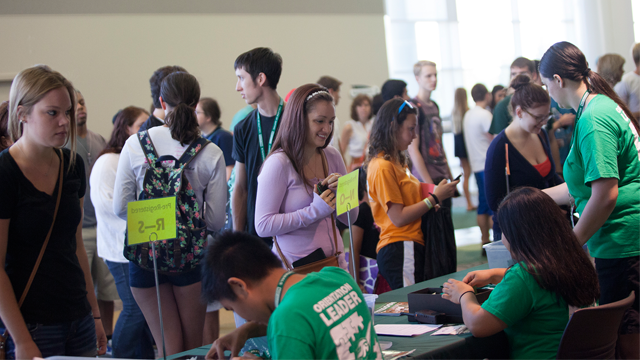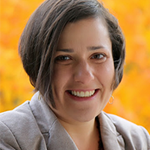This post first appeared at TalkPoverty.

Fall 2013 student orientation at College of DuPage. (Photo: COD Newsroom/flickr CC 2.0/ Edited from original)
President Obama recently introduced a proposal to make two years of community college free nationwide. This is a bold effort that might not have been necessary 20 years ago, but today it is sorely needed. There is a popular perception that community college is already free or nearly free, especially for students from low-income households, and that the real challenges facing students have more to do with academic under-preparation or informational barriers.
If only this were true.
The average out of pocket cost facing community college students from low-income families ranges from $8,000-$11,000 per year. That is after all grant aid is taken into account, and it represents the amount that students must borrow and earn in order to make college possible. The situation facing moderate-income families is not much better — and they are often in a more difficult situation since they have little disposable income and yet cannot access the federal Pell Grant.
Thirty years ago, high schools were focused on helping more students envision college as part of their future. Two decades ago they began really focusing on academic preparation for college. But today, ambitious, academically prepared high school graduates are attending college and leaving without degrees because they cannot afford to be there. Among the academically prepared, more than one in five high school graduates from low-income families forgoes college entirely, and about 30 percent who start at a two-year college never complete any degree. These non-completion rates signal talent loss, and things have gotten worse over the last decade.
As an education scholar and researcher who has published extensively on the topic of college affordability, I’m troubled by the response of many progressives and scholars who criticize President Obama’s free community college proposal for not being “narrowly targeted.” The implication is that only a plan that exclusively serves low-income students, and no one else, can meet their needs. This is a false narrative, capable of sowing confusion and killing the prospects of legislation that could do real good.
The truth is that low-income students stand to benefit from free community college in real and measurable ways that will increase their access, boost their persistence and raise their graduation rates. Since the president’s plan is a “first-dollar” plan, low-income students would receive the greatest subsidies. Students would not have to give up their Pell grants; instead, because tuition would be free, Pell grant funding could be used to meet costs other than tuition. Thus, I predict that low-income and moderate-income students would realize greater gains than their more affluent classmates. The clear and inclusive signal created by “free community college” coupled with the progressive distribution of monetary benefits makes this effective “targeting within universalism.”
Rigorous studies have shown that reducing the cost of community college by even $1,000 a year results in substantial increases across the board. More low-income students enroll directly from high school. More low-income students enroll who would not otherwise have enrolled at all. More low-income students transfer to four-year colleges. And the students who would not have enrolled — except for the fact that community college became more affordable — are more than 20 percent more likely to earn a bachelor’s degree within eight years of high school graduation. All that for a $1,000 discount? Imagine what those numbers would be if the first two years of community college — or any college, as Senator Bernie Sanders recently proposed — were made free.
To help advance a greater understanding of the value and mechanics of making the first two years of college free, I’ve written a response to questions many people have about the president’s proposal. In addition, I’ll be participating in a public discussion with economist Steven Durlauf on the topic that will be held March 12 on the campus of the University of Wisconsin-Madison and televised in the state and online via Wisconsin Eye. Our national dialogue on the merits of making postsecondary education available to everyone — and affordable — is, finally, beginning.
The views expressed in this post are the author’s alone, and presented here to offer a variety of perspectives to our readers.


